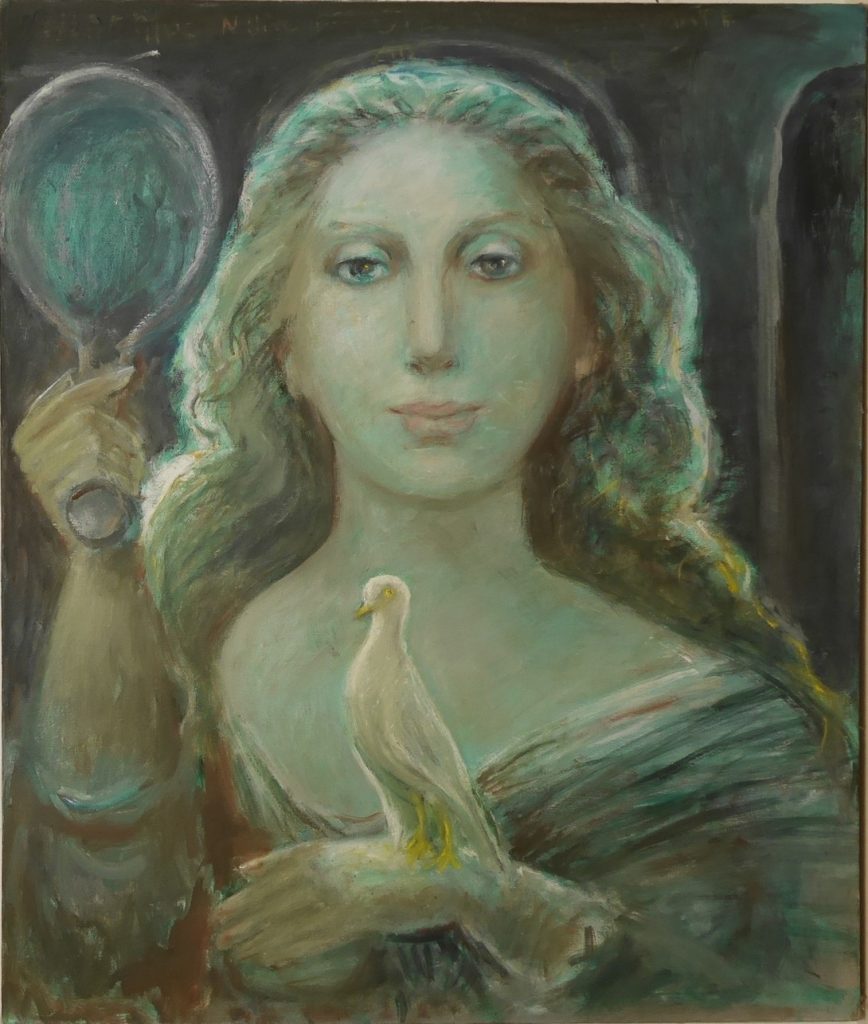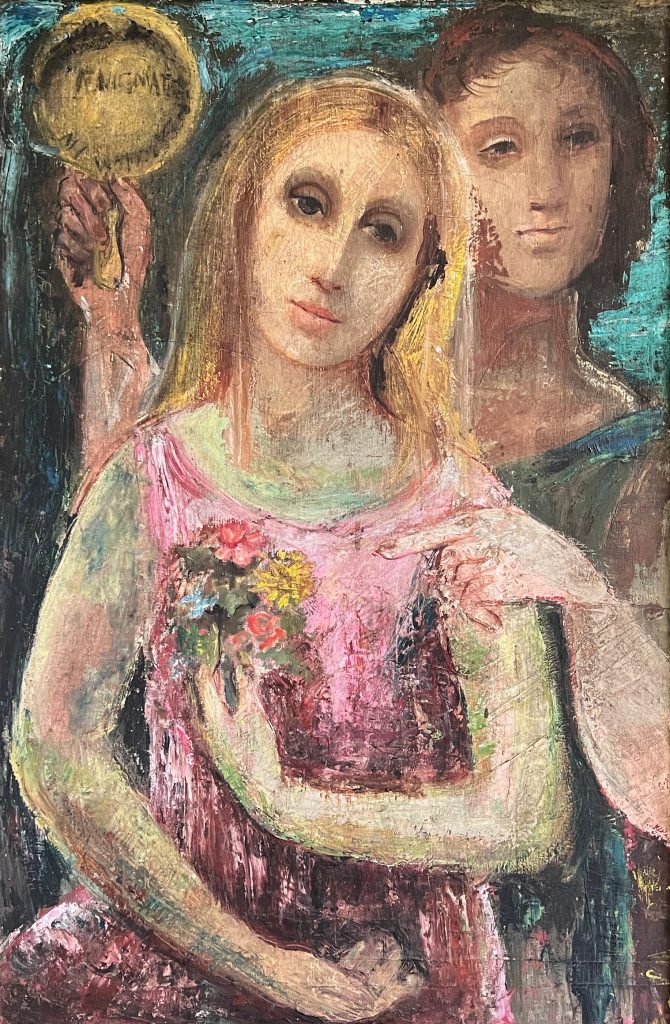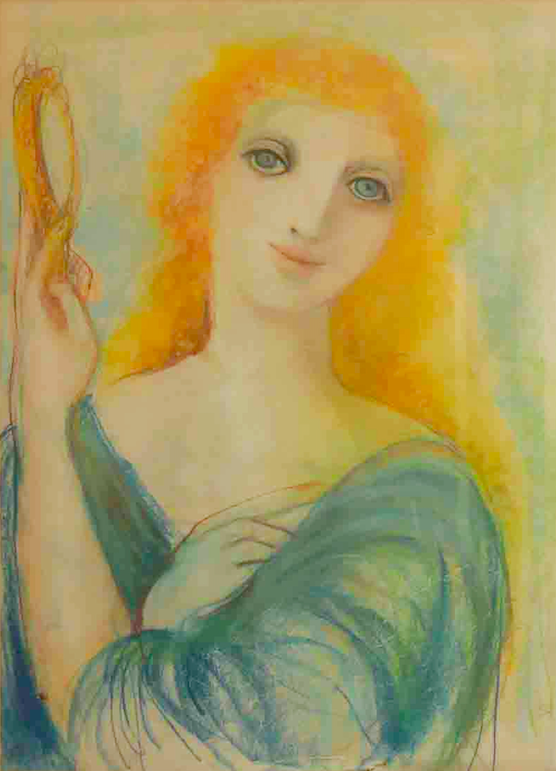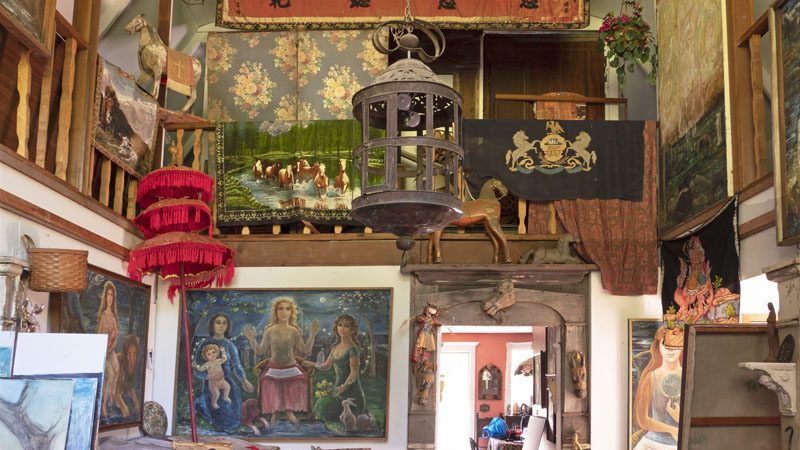
Mary Holmes built a sunny studio on her property in Santa Cruz where she could paint in her time off from lecturing in the Art History department at UCSC. She continued to create work long after her retirement. The studio remains there today, just a few steps away from the chapel and the stables, filled with her paintings and treasures.
Photographs of the Studio
Selected Work from the Studio:
Lilith & Eve
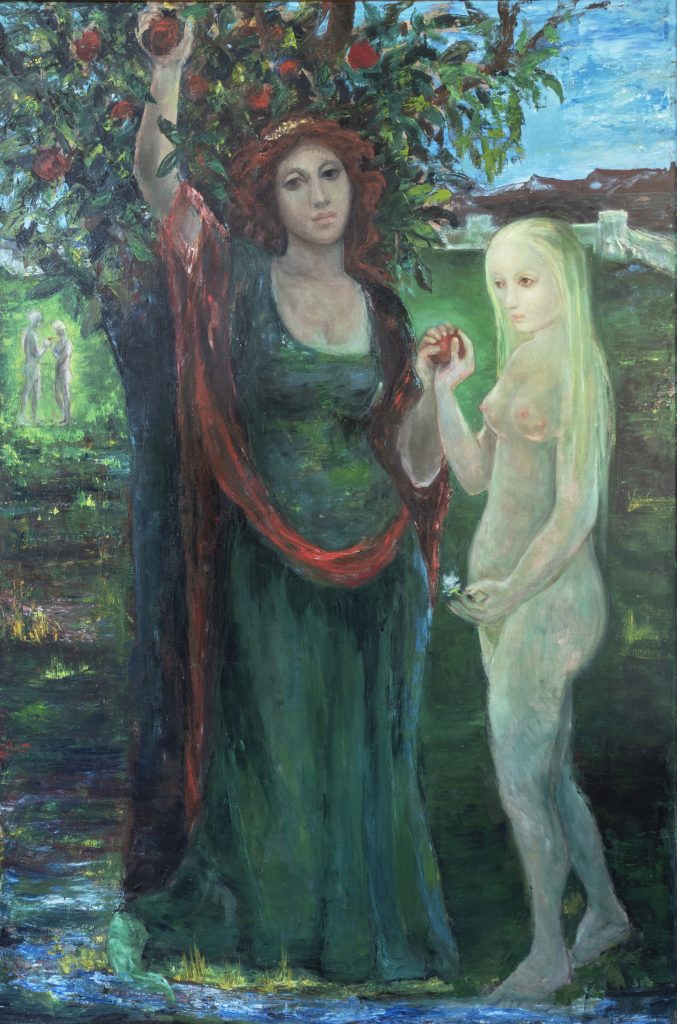
1987, oil on canvas, 48″ x 72″
While the story of Adam and Eve is well known, few are aware of the alternative theory that God originally created a woman named Lilith from the dust of the earth alongside Adam to serve as his wife. According to rabbinic lore, Lilith rebelled against the expectation that she remain subordinate to Adam and broke free of Eden, replaced by Eve who God fashioned from Adam’s rib. Lilith partnered with Samael, king of the daemons and spawned demon children who wreaked havoc on the earth and the human dependents of Adam and Eve.
Meanwhile, Eve appeared more comfortable playing consort to Adam, at least until she fell prey to the serpent who enticed her with the forbidden fruit from the tree of knowledge. Some, especially during the middle ages, believed that the serpent was actually Lilith in disguise. Here, Holmes depicts an innocent young Eve accepting the fruit from a more mature Lilith who gazes out at the viewer. Lilith takes human form but the reptilian tail trailing from under her dress indicates her dual nature.
Holmes also employs a practice common in Renaissance art called multiplex narrative in which two or more scenes from across time are depicted in a single painting. In the background comes a later moment in Genesis: Eve hands Adam the forbidden fruit, both partaking in the original sin.
Et in Arcadia Ego (Cat’s Cradle)
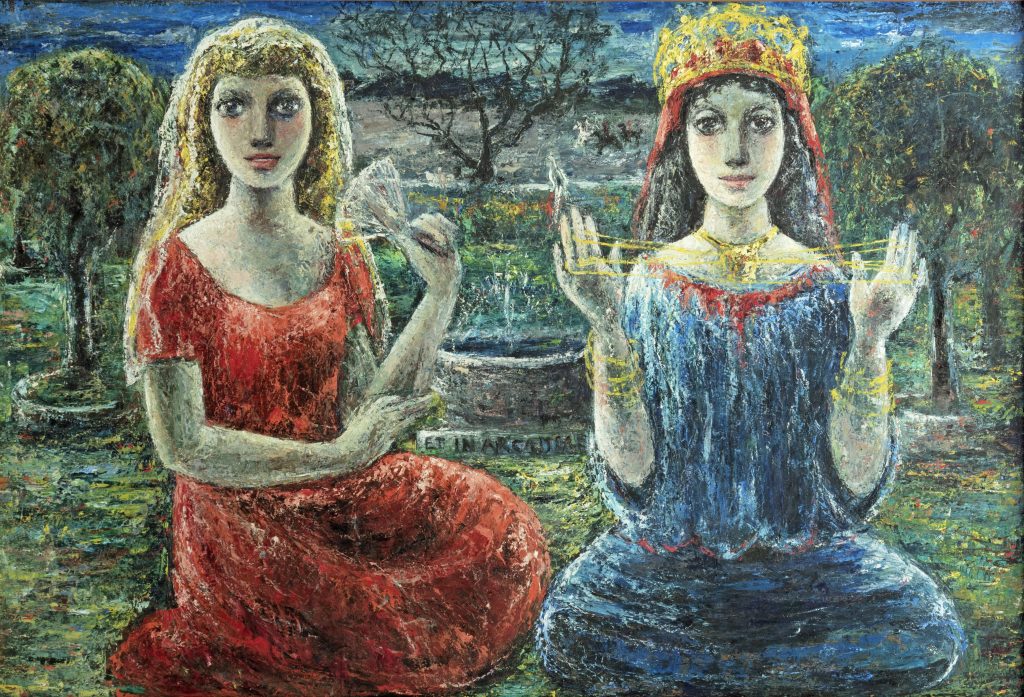
As an art history professor, Mary Holmes must have been familiar Nicolas Poussin’s famous Et in Arcadia Ego (pictured left), an essential French Baroque piece in any treatment of western art history. It is safe to say that she drew on its themes in her own Et in Arcadia Ego, alternatively titled “Cat’s Cradle.” The latin translation of the title inscribed on Poussin’s tomb and Holmes’s fountain is “Even in Arcadia, there am I” suggesting that death is present even in utopia. Holmes’s idyllic scene differs from Poussin’s as it features women in a garden rather than a crowd of shepherds in an untamed pasture, However the message remains the same. The queenly figure’s cat’s cradle may allude to a playful creativity in the face of certain death. Outside of the garden walls, the landscape appears darker with a bare tree and figures on horseback.
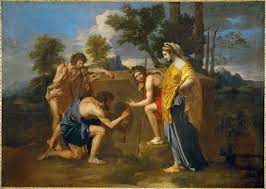
1637-1638, oil on canvas, 34″ x 47″
Europa & The Bull
“Europa and her friends were dancing and picnicking on the Asian shore of the Mediterranean. Zeus saw her and fell in love with her. He took the form of a bull and came and stood nice and sweet around all the people. They were so delighted by him that they made garlands of flowers for him and petted him. Finally they started to get on him and try to ride. When Europa got on him, he ran to the beach and dashed away across the water and deposited her on the island of Crete. She later gave birth to Minos, the founder of the Minoans, the first European civilization. And that’s why Europe is called Europe.
The story symbolizes the radical bringing of the Eastern world into Europe, literally as Europa was carried there by Zeus. In the Mediterranean, the bull is always sacred and the bearer of divinity. In the Northern world, it is always the female figure that is sacred.
Europa is holding a flower, so that suggests a union of the animal, the human, and nature all in one. It is the wonderful union of those opposites that gave Europe the kind of strength that could pull it up out of nothing to be dominant. It was a cross-fertilization of the Eastern and Western worlds, and once it happened it could never go back. It was written in stone. I think this union of opposites explains the marvelous fertility of Europe, the way it keeps producing extraordinary people and amazing ideas: knowledge of and interest in the historical past, romantic love, science, liberty–all emerged out of the same tiny part of the world over a few hundred years.”
Interpretation by Mary Holmes herself in Mary Holmes: Painting and Ideas by Addi Somekh
Now We See Through a Glass Darkly
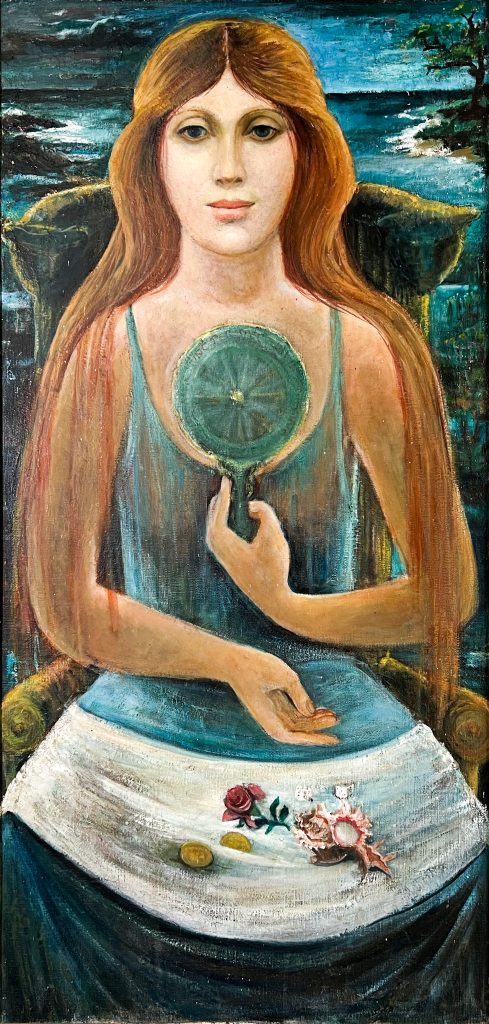
1964, oil on masonite, 24″ x 48″
Mary produced several paintings under this title referencing 1 Corinthians 13:12: “For now we see through a glass, darkly; but then face to face: now I know in part; but then shall I know even as also I am known.” Contemporary scholars interpret this passage as a call to transform one’s relationship with God from a hazy reflection to a true mutual intimacy. This section of Corinthians is all about the nature of Love and the gifts of the Holy Spirit, topics around which Mary eventually built her chapel.
The figure in Holmes’s painting holds a mirror to her chest on her seaside throne. Small treasures rest on her lap: a rose, two coins, a conch shell, and a pair of dice. Could the mirror and trinkets allude to a narcissism and materialism that inhibit spiritual connection? Or is the figure connecting to some godliness within herself? How does the meaning change in other work of the same title with different figures, settings, possessions and positions?
